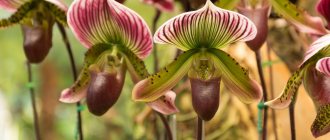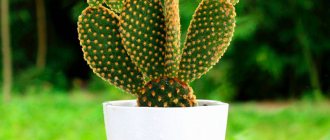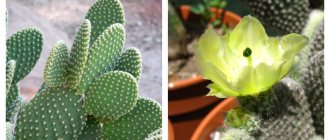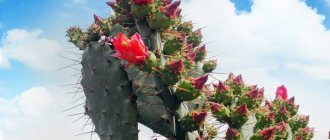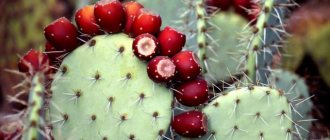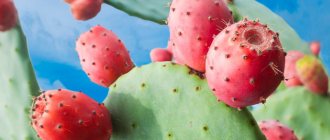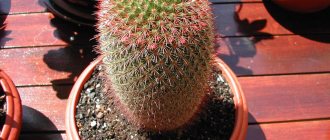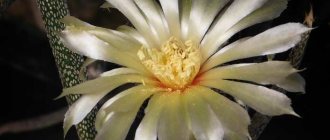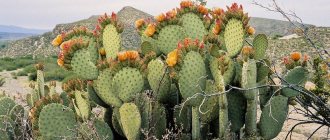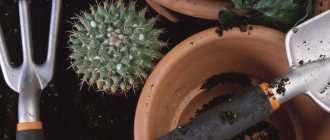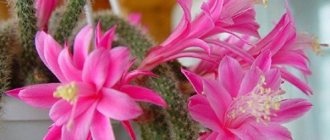Prickly pear is a true legend among cacti. It is no coincidence that perhaps the most famous cactus on our planet was chosen for school experiments that introduce the amazing talents and structure of cacti. Even today, prickly pear does not lose its industrial importance. However, it is rapidly losing its former popularity. Due to their growth rate and size, prickly pears have almost disappeared from our interiors, even despite the emergence of new interesting varieties. The ease of formation and control, as well as the variety of prickly pears, are too often unfairly ignored. But the special beauty of representatives of the amazing genus Opuntia deserves more than decoration for biology classrooms.
Prickly pear - a legend among cacti
Description of the plant
The appearance of prickly pears (Opuntia), forming bizarre thickets and figures, is almost inseparable from Mexican landscapes (so much so that prickly pear is even present on the national coat of arms). This is a historically valuable and ancient cultivated species, which was already used for food and as a forage plant thousands of years ago. But this does not at all negate the decorative nature of prickly pears.
This cactus became famous for its special segmentation of stems. Articulated shoots are flat, disc-shaped, most often oval or almost round, less often cylindrical, branch and form huge bushes over time. It is impossible to predict where exactly the segments will develop, in which direction and from which “point” a new segment will begin to grow, which makes the prickly pear a star full of surprises.
The very thick skin protects the juicy pulp of the shoots. Old stems gradually become woody and a light brown crust appears on them. Prickly pears also have reduced cylindrical leaves, which are clearly visible on young shoots. In nature, prickly pears grow up to 2-4 m in height, but in a room they rarely reach even 1 m.
The spines of prickly pears are very dangerous. Moreover, large, hard true spines are not as traumatic as the small, sharp glochidia surrounding the areoles with jagged edges. They are easily separated from the stem and difficult to remove from the skin, so it is better to handle this cactus more carefully. In animals, glochidia cause severe irritation when ingested.
The flowering of prickly pears is very spectacular. Red, yellow or orange, short, simple flowers located on the side of the segments appear dazzlingly bright. Unfortunately, most often the flowering of prickly pear remains just a dream, because prickly pears bloom at an advanced age and when they reach large sizes, almost impossible in an indoor format.
White-haired prickly pear (Opuntia leucotricha). © marasri
The main and most popular types of prickly pear with photos
Small-haired or golden (Opuntia microdasys)
Golden yellow cactus from North America, with numerous stems up to 0.5 m. Segments with a dark green color, and golden-white halos with a large number of glochidia. During the hot period, yellow flowers appear in the daytime, which close in the evening. Sometimes round fruits appear.
White-haired (Opuntia leucotricha)
The flower comes from Mexico. The height reaches 5 m. A crown is formed from the branches. Segments up to 20 cm in length. The entire surface is covered with white hairs up to 8 cm long. The flowers are yellow, the fruits are round, spherical, and white. Can be eaten.
Berger's (Opuntia bergeriana)
The surface is covered with yellow spines. Consists of segments up to 20 cm in length. It blooms with rich red flowers, the stigma is green. It reaches a height of 1 m and does not require special conditions or care.
Gosselina (Opuntia gosseliniana)
Habitat Mexico and Southern California - shrub up to 1 m in height. It blooms with yellow flowers of different shades. The segments change color with age. Young cacti are red, gradually turning into dark green. Spines up to 10 cm long, soft to the touch. Appear on the upper halos.
Santa Rita (Opuntia santa rita)
Cactus is a shrub with clumps up to 1 m. Thin stems up to 20 cm wide. The segments are round in shape with blue edges and a halo. It blooms with yellow flowers from an early age.
Main or main (Opuntia basilaris)
The egg-shaped segments are blue-green in color. The homeland is considered Mexico, California, Utah. Depressed, drooping halos with a large number of spines. Straight stems diverge at the base up to 1 m. Blooms with pink flowers and red pistil. Flowering is characteristic of adult cacti. Does not tolerate excess moisture. There is a rare species with elongated segments.
Sheri (Opuntia scheerii)
One of the most beautiful types of cacti from Mexico. It has thick areoles, covered with spines up to 1 cm. The stems branch at the base. There are brown hairs and glochidia over the entire surface. The flowers are yellow with a green pistil.
Long-thorned (Opuntia longispina)
Creeping species from Western Argentina. Stems up to 4 cm form a kind of chain of segments. The areoles are dark in color, on which red tufts of glochidia are formed. An adult cactus blooms with orange-red flowers. The edges are covered with many spines. With one central and long one.
Curassavica (Opuntia curassavica)
From the island of Curacao. Sagging stems with long segments. Green stem segments up to 5 cm. Light spines on halos. The segments are very fragile.
Brittle (Opuntia fragilis)
This type of prickly pear is native to Central America. The round segments are several cm long, brittle and often fall off. Small halos with a white border and yellow glochidia. Along the edge there are dark yellow spines 3 cm long. The flowers are yellow with a green center.
Types of indoor prickly pears
Prickly pears may be strikingly similar, but you can't blame them for a lack of variety. The presence of three hundred species makes prickly pear the largest genus among cacti. Most of them are too gigantic for indoors, but several species have successfully adapted to growing in pots.
White-haired prickly pear (Opuntia leucotricha) is a neat cactus with elongated fleshy oval stems and a dark green color, famous for its densely spaced white areoles with hair-like spines up to 5 cm long, appearing on older segments.
Berger's prickly pear (Opuntia bergeriana) is a large species with irregular flat discs of matte green segments up to 25 cm long and very large brown spines in sparsely spaced areoles.
Small-haired prickly pear (Opuntia microdasys) is a compact species, up to half a meter tall, with elongated ovals of fairly thick segments that look massive. Large and round, the areoles with bright glochidia appear as densely spaced dots - miniature bunches of white, yellow or red mini-spines.
subulata is an unusual species with cylindrical, vertically growing shiny, bright green segments, long-lasting protruding reduced tube leaves, yellow spines and white hairs.
Berger's prickly pear (Opuntia bergeriana). © ESTO jarelmaks
Opuntia microdasys. © Elie Mouawad
Opuntia subulata. © CStone2005
Opuntia articulatus is an interesting species with lumpy, thickened dark gray segments and unusual flat, paper-like, slightly curved, non-thorny spines up to 5 cm long.
Prickly pear (Opuntia fragilis) is a ground cover species with rounded, thickened, small segments that are naturally highly branched. The maximum length of segments is up to 3 cm. White halos with yellowish spines seem too rough for such a large cactus.
vestita is an interesting species with cylindrical shoots forming intricately branching trunks, densely covered with fine white hairs.
Opuntia articulatus. © uhlig-kakteen
Opuntia fragilis. © palmbob
Opuntia vestita. © Scido
Tuna prickly pear (Opuntia tuna) is an interesting species with flat, densely branched shoots of a rich green hue in bizarre silhouettes.
Long-awned prickly pear (Opuntia longispina) is a creeping, naturally compact species with light disc-shaped segments up to 4 cm in length, very densely spaced areoles with 3-5 long white needles.
Gosselin's prickly pear (Opuntia gosseliniana) is a squat, densely branched species with perfectly round disks of segments with a grayish coating, against which the bright crimson young needles appear dazzling.
Species plants are now being replaced by a variety of varieties - with colored spines, variegated young leaves, purple and metallic effects. Particularly compact and interesting are coral-shaped cristates and densely branching monsters.
Tuna prickly pear (Opuntia tuna). © semiramis78
Long-awned prickly pear (Opuntia longispina). © John Gamesby
Gosselin's prickly pear (Opuntia gosseliniana). © fearlessthereforepowerful
Description[edit]
Opuntia fragilis
- a small, slender plant, rarely more than 10 cm (4 in) in height: the joints are swollen, fragile, easily separated, oval, elliptical or almost spherical, 3-5 cm (1-2 in) long and almost as thick. in broad, bright green: areoles 0.6–1.3 cm (1/4–1/2 inch) apart, with whitish hair and several white to yellow setae, which are much longer and more abundant on older joints; vertebrae 1-4, sometimes several small additional paragraphs, weak, dark brown, upper one usually longer and stronger than others, rarely 2.5 cm (1 in) in length: flowers greenish-yellow, 2.5-3. 2 cm (1-1 1 ⁄ 4 in) wide: the fruit is ovoid-globose, with few spines or setae, mostly sterile, 2.5 cm (1 in) long or less; seeds are few and large. [4]
Growing conditions for indoor prickly pear
The warmest, brightest window is the ideal location for this unusual cactus. A special wintering is needed only for flowering plants.
Lighting and placement
Prickly pears require the brightest possible lighting and cannot tolerate even slight shading, especially bright varieties. Western, eastern, southern window sills are the only options for maintaining compactness and dense branching. It is not necessary to increase the lighting for prickly pear in the winter, but if the cactus remains in the same place, in the spring it must be carefully accustomed to bright lighting, protecting it from direct sun for several weeks.
Prickly pears are not afraid of rearrangements, but not during the budding period. Even a slight fluctuation in conditions and turning can cause a massive drop of all the buds.
Caring for prickly pear at home
Prickly pears must be handled very carefully, protecting the easily falling spines from accidental touches. Due to glochidia, cleaning the plant is a huge problem, but hygiene and the absence of dust remain one of the keys to the health of the cactus, along with careful watering.
Watering and air humidity
There is only one difficulty in watering prickly pears - the stems should not be soaked under any circumstances. It is precisely because of the extreme tendency to rot that if watered inaccurately, prickly pear is easier to water through a tray, because constantly making sure that water gets only along the edge of the pot is not always convenient. Prickly pears are actively growing; they are large cacti, so they need to be watered generously, draining off excess water and allowing the soil to dry out on top. In summer, prickly pears love evening watering.
During the dormant period, if the plant is sent to a cool place, it is better to stop watering completely. When wintering in a warm place, they are simply kept minimal and supportive (about once a month).
Top dressing and fertilizer composition
You only need to add a standard dose of fertilizer to the water in spring and summer. For prickly pear, 1 feeding per month is enough.
You can use not only special fertilizers for cacti and succulents, but also other fertilizers with a reduced nitrogen content (the standard dosage can simply be reduced several times). Prickly pear is extremely sensitive to excess nitrogen. It is better not to experiment with organic fertilizers.
Pruning and shaping prickly pear
This cactus can be shaped at your discretion - remove segments that lead to loss of compactness and elongation, are underdeveloped or damaged, tie up, update with radical pruning, or replace with young cacti. The segments are easy to separate; cutting is not necessary. The main thing is not to forget to treat the wounds, allowing them to dry thoroughly.
Prickly pears are transplanted with a dry earthen ball and are not watered after transplantation.
Transplantation, containers and substrate
Only young cacti need frequent replanting; adult prickly pears are transplanted in early spring in those years when there are signs of a lack of space for root development.
Prickly pears require stable containers. Unlike many cacti, prickly pears, when growing, can be planted in deep and spacious pots that are more suitable for their spreading nature and unpredictable branching.
It is better to choose an earth mixture from among special substrates for cacti. Prickly pears prefer slightly acidic soils. Water permeability is a key parameter; the soil must contain coarse sand and other disintegrants.
Prickly pears are transplanted with a dry earthen ball and are not watered after transplantation. It is better to compensate for stress by placing it in a warm, semi-shaded place. Only after a week, giving the plant time to adapt, watering and usual care are resumed.
Prickly pear - home care
Location and Lighting: Prickly pear needs bright sunlight. The most suitable place is windows on the south side. Adaptation of a young plant to direct sunlight should occur gradually. In summer, it is advisable to take the containers out into the open fresh air - this hardens the cactus and stimulates growth.
Temperature: Prickly pear is not picky about temperature. It tolerates cool and hot conditions easily. In winter, when there is a lack of light, it is better to keep them at low temperatures (10-14°C). This not only prevents unsightly stretching, but also promotes future flowering.
Soil: To grow prickly pear, you can use ready-made cactus soil. When preparing the substrate yourself, mix turf, leaf, peat soil and sand in equal quantities. Brick chips and crushed charcoal must be added to the mixture. Under no circumstances should humus be added to the substrate. A small layer of crushed stone or expanded clay can be poured onto the soil surface.
Watering and humidity: Prickly pear requires very moderate watering. In the summer season, the soil is moistened as it dries, and in winter the frequency of watering is once every 3-4 weeks. When kept in cool conditions (6-8°C), watering is stopped completely. The cactus does not need spraying and can easily tolerate hot, dry air.
Feeding: During the period of active growth (from April to September), plants are fed once a month. An exception is made in extreme heat in the summer. In such conditions, you should refrain from feeding. You can use special mineral fertilizers for cacti.
Transplantation: Prickly pear is difficult to transplant. Therefore, this procedure is carried out, if necessary, every 3-4 years. It is advisable to select containers that are not very deep, but wide. Suitable time of year for transplantation: spring.
Reproduction: Prickly pear is propagated by cuttings and seeds.
Cuttings are carried out in spring or early summer. To do this, several stem segments are taken from the plant. The cut is sprinkled with ash. Such cuttings wither within several days. Rooting is carried out in a moist sandy substrate. The cuttings are buried 3 cm and covered with a plastic or glass cap. The bottom of the container must be heated. Periodically, the cuttings are sprayed and ventilated.
Propagation by seeds is carried out in early spring. Prickly pear seeds need scarification before planting. The dense shell is carefully filed with sandpaper or a file. Next, the seeds are soaked in a warm light pink solution of potassium permanganate.
Sowing is done in a light substrate consisting of equal parts of leaf soil, sand and charcoal. A drainage layer of expanded clay is poured onto the bottom of the containers. The top of the container is covered with glass and placed in a warm and bright place.
From time to time, the “greenhouse” is opened and the soil is moistened with a spray bottle. Grown seedlings are planted in separate pots and protected from bright light. After two years, the plants begin to adapt to normal conditions.
Diseases: The root system of prickly pear is often affected by fungal diseases (gray rot, late blight and others). A favorable background for development is excessive moisture of the substrate. Microscopic fungi cause the death of not only young, immature plants, but also mature, strong plants. The affected specimens are thrown away, and the remaining healthy ones are treated with fungicides. For prevention purposes, it is necessary to treat the substrate with disinfectants and follow the watering regime.
Pests: The crop may suffer from mealybugs, mites, and land mollusks. Dangerous pests of prickly pear are nematodes. Their presence is determined by spherical swellings on the roots. Such new growths are cleaned off with a knife, and the roots themselves are immersed in water heated to 50°C for 10 minutes. During this procedure, the root collar must be protected from hot water. The treated roots are sprinkled with ash or crushed coal.
Difficulties in care:
- Lightening of the apical part and weak spines indicate insufficient lighting.
- Slow growth of phytomass is observed with insufficient fertilizing, poor summer watering or waterlogging of the soil in winter.
- Brown spots on the surface are a signal of the development of gray rot.
- If the stem segments of prickly pear lose turgor and fall off, this may be a consequence of a sharp temperature change or overdrying of the substrate.
Diseases, pests and problems in growing
Prickly pears often suffer from lack of light, wetting, overwatering, reacting by wrinkling and the appearance of soft spots of rot, stretching, deformation, stunting of growth, and very often by drying out or dropping young segments. Spider mites, scale insects and other pests are sometimes found on them, but, as a rule, only on old cacti suffering from lack of light. When pests appear, it is better to immediately begin treating with insecticides.
Prickly pears are easy to grow from cuttings
